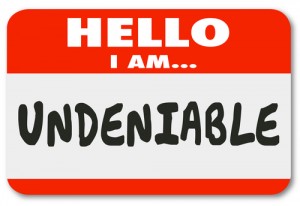SMEs (small and medium-sized enterprises) are in a better position to win major public tenders than ever before. As public service and government organizations look to save money and encourage local trade, the trend is now to break down larger contracts into smaller chunks to allow SMEs to participate, thereby spreading workloads and also project risk for the buyer. Given that an old business legend says that any tender will be measured 30% on price and 70% on various aspects of service delivery and quality, it is easy to envisage the positive impact that having ISO 9001:2015 can have on a SME’s chances to win a tender. So, how can a SME use its ISO 9001:2015 compliance to leverage as much benefit as possible when participating in a public tender?
ISO 9001:2015 – Advertising the benefits
Public tenders tend to be less complex than they were some years ago, and typically will have standard sections to be completed with an opportunity to advertise the benefit your organization can bring to the project, usually in around 500 words depending on the size of the project. Given that central government awarded £10bn ($ 14.38bn) of contracts in the UK in 2014, it can easily be seen that there are huge opportunities for the SME here, if your organization can separate itself effectively from the competition. So, how exactly should a SME make that happen?
- Ensure you mention your ISO 9001:2015 accreditation in the appropriate section. This is obvious, but can be overlooked.
- Ensure you provide your ISO 9001:2015 certification copy and registration number as “accompanying information” with the tender. If you do not provide evidence of your accreditation, it is very likely that your bid will be passed over, as the project owner may well not have time to ask you to provide proof if competitors have.
- Put yourself in the bid reader’s shoes: ISO 9001:2015 helps you meet regulatory requirements, improves customer satisfaction, increases efficiency, and produces a “right first time” culture with user feedback and evaluation ensuring continual improvement. It is possible that the bid reader is not familiar with the contents of the standard, so don’t assume that simply stating that your SME is 9001 compliant or accredited will suffice; include a succinct and accurate appraisal of what ISO 9001:2015 compliance will guarantee if your bid is successful.
- Advertise the benefits that 9001:2015 can bring; your organization’s evidence of risk-based thinking, proof of positive customer feedback and of continual improvement against KPIs (key performance indicators), displaying a strong culture of root cause analysis and corrective action are all excellent signposts that a SME can produce services just as intelligently and effectively as any larger business. Again, do not assume that the bid reader will know this. It is not unusual for a public sector employee to assume that a larger organization has greater capabilities than a small one; advertising your credentials via your ISO 9001:2015 knowledge will ensure that is not the case here.
- Offer to demonstrate your quality credentials via a presentation. This may be a requirement if your SME is selected for the final round in the process, but offering this service in advance shows confidence in your quality management and the strength of your service/product facilitated by ISO 9001:2015.
So, is that all we need to do to ensure ISO 9001:2015 helps us win a public tender?
Shaping 9001:2015 benefits to your organization
Obviously, there are other elements and resulting benefits of ISO 9001:2015 compliance that can benefit your organization, depending on what sector you operate and are bidding in. Perhaps emphasis on your assessment of risk, which you can read about in the previous article Risk-based thinking replacing preventive action in ISO 9001:2015 – The benefits, consistency of training, or your organization’s operational control are relevant to the tender you are participating in? If so, tie the particular element back to your ISO 9001 compliance and it suddenly has substance, as opposed to just being a claim without foundation. Read many tender responses and there will be many spurious claims about an organization’s abilities; closely aligning your statements with the ISO 9001:2015 standard can ensure that anything you claim on behalf of your organization is not only true, but substantive. Lastly, whether you win or lose your public tender, ensure that you seek feedback and use it wisely in the future. This evidence of continual improvement can be the very element that guarantees your SME success not only now, but also in future tenders.
Why not use our free Gap Analysis Tool to measure your readiness for ISO 9001:2015?
Business & Finance Articles on Business 2 Community(81)
Report Post






